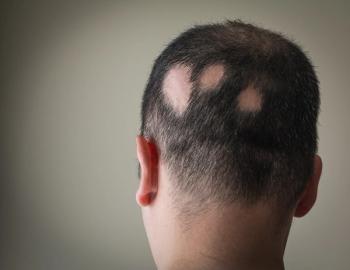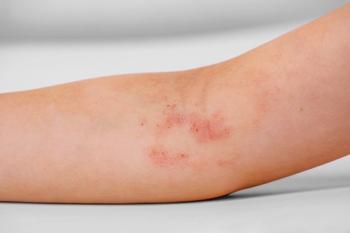
- Consultant for Pediatricians Vol 6 No 9
- Volume 6
- Issue 9
On the Tip of Her Tongue
These lesions on the tongue of a 7-year-old white girl had been present since she was 2. Her physician at that time had diagnosed "geographic tongue." Over the years, the lesions have increased in number, although not in size.
These lesions on the tongue of a 7-year-old white girl had been present since she was 2. Her physician at that time had diagnosed "geographic tongue." Over the years, the lesions have increased in number, although not in size.
The vesicular lesions measure a few millimeters to a centimeter in diameter and are mostly reddish; a few are blue. They are asymptomatic. Minimal bleeding occurs with trauma. The child has no other skin lesions and has been otherwise healthy. Her birth history and family history are unremarkable.
Hemangiomas and vascular, lymphatic, and arteriovenous malformations were considered in the differential diagnosis. Based on my clinical impression, I believe the diagnosis is multiple hemangiolymphangiomas of the tongue. Do you agree with this assessment?
Would you consider a diagnostic study, imaging, or biopsy for this patient? Could you comment on the prognosis and treatment?
---- Bhagwan Das Bang, MD Opp, Ala
I thank Dr Bang for sharing this most unusual and interesting case with the Consultant readership. Obviously, this young girl's condition does not remotely resemble the flat, curvilinear, red and white lesion typical of geographic tongue.1 Some 40% to 80% of tongue tumors are vascular; the remaining neoplasms are teratomas and hamartomas of various connective tissue elements (eg, nerve and muscle). The multiple, red to purple, bleb-like papules strongly suggest a vascular cause of this long-standing tumor.
Morphology alone does not allow proper subclassification, because such lesions may be variably composed of capillary, venular, arteriolar, or lymphatic channels. Despite the predominantly red color, the entire lesion could actually be a lymphangioma with superimposed capillary leakage. Therefore, I would favor a biopsy of a prominent papule to try to characterize the lesion histologically. Tongue biopsies heal readily and well.
Some attempt should be made to assess the lesion for overall extent and for the possibility of a single "feeding" structure amenable to ligature or embolization. Ultrasonography is a simple noninvasive method that might be entertained. Contrast-enhanced CT scans might also be considered. However, the best diagnostic technique for tongue lesions is probably MRI. Axial, coronal, and sagittal views should be obtained with T1-, T2-, and T1-gadolinium enhancement.
If there is no single large, deep anomaly, then individual blebs could be electrocauterized and/or high-density bleb-bearing areas could be removed en bloc by partial glossectomy.2
I would be concerned about the possible development of macroglossia and would certainly wonder about the psychosocial ramifications of an atypical-appearing tongue. Thus, for both medical and cosmetic reasons, I think that intervention is justifiable.
---- Ted Rosen, MD Professor of Dermatology Baylor College of Medicine Houston
References:
REFERENCES:
1.
Nuthakki S, Schlievert R. Geographic tongue.
Consultant For Pediatricians.
2007;6:345-346.
2.
Jian XC. Surgical management of lymphangiomatous or lymphangiohemangiomatous macroglossia.
J Oral Maxillofac Surg.
2005;63:15-19.
Articles in this issue
about 18 years ago
Tuberous Sclerosis Complex and Type 1 Neurofibromatosisabout 18 years ago
Atypical Tuberculin Skin Test Responsesabout 18 years ago
Eczema Herpeticum: A Manifestation of Hyperimmunoglobulin E Syndromeabout 18 years ago
Middle School and College Vaccinationabout 18 years ago
Injury From a Fall?about 18 years ago
Middle School: A Time for Maturation-and Vaccinationabout 18 years ago
Elementary School Vaccinationabout 18 years ago
Adolescent Scoliosis: REFERENCES:about 18 years ago
Immunizing the College Student: REFERENCES:about 18 years ago
Hypersensitivity to Vaccine StabilizerNewsletter
Access practical, evidence-based guidance to support better care for our youngest patients. Join our email list for the latest clinical updates.














